Pipe Organ 101 (sort of) | Our Philosophy of Organ Tuning | The Physics of the Organ | How an Organ is tuned | Harmoniums and Reed Organs | Carillons | Harpsichords
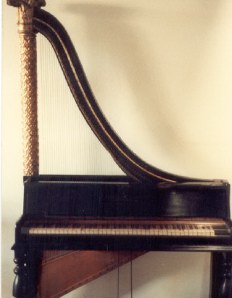 |
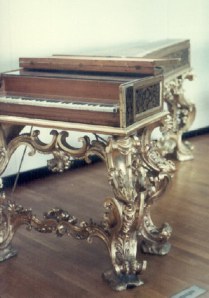 |
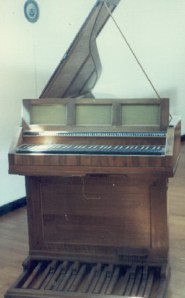 |
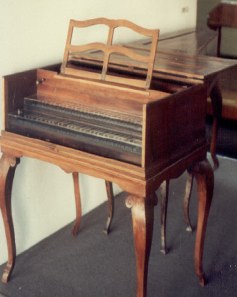 |
I don't want to make it seem like we have an ax to grind or anything -- but sometimes one really does have to set the record straight!
"Wow! It looks kinda like a piano!"
How many times have I heard that?
Nope! It's the other way around. The piano looks SORT OF like a harpsichord. And we have to put it that way because the harpsichord, as such, can trace its origins at least to the 16th century and has primitive "ancestors" that date back much earlier; whereas the piano, in its early and very primitive form, dates back to the very late eighteenth century.
To really set the record straight, the KEYBOARD, as a device to manipulate a sound-producing medium was first employed in the organ - very early on, but one would recognize the manual keyboard as fairly modern by the 14th century (geek speak translation: The organ had keyboards you could play before anything else did!)
So then what is it?
"Look, this thing has got two keyboards ... like an organ ... it must be some kind of weird looking organ..."
Nope.
The harpsichord is a musical instrument that produces sound by mechanically plucking wire "strings" with a quill that is attached to a lever called a "jack." The jacks are activated by means of one or more keyboards. In the "old days" - those days when old was typically spelled olde as in "ye olde..." - in the old days harpsichord quills were really made from quills, often donated by a generous waterfowl. Today the quills are often made from a material called Kevlar. But with all due respects to the Kevlar people, and nice as their product is, we think ducks still produce a finer quill!
Not unlike the organ, there is no DIRECT way to affect the loudness or softness of the sound. So just as with the organ, where a softer sound is created by utilizing a quieter set of pipes, or combination of sets, and a loud sound is derived from a loud set of pipes or combination of sets, so the harpsichord is generally fitted with several sets of strings - allowing the player to "synthesize" loud and soft. The artistry involved in playing the instrument -again, similar to the organ - in part involves creating the illusion of expressively - of loud and soft.
Because of the way the instrument works, the sound has an immediate attack, very little sustain and a rapid decay. If one could analyze the waveform, it would be apparent that the waveform is similar to that of ... well, popcorn pinging against a metal pot.
One frequently sees harpsichords fitted with two keyboards - usually referred to as manuals. This is to allow the player to rapidly change from a soft set of strings to a loud one, and back again. Harpsichords do, in rare instances, have pedal boards, though the so-called "pedal harpsichord" was a specialized instrument, used mostly as a practice instrument for organists.
There are by the way, three manual harpsichords as well, although they are a product of the Romantic Era (roughly the middle of the nineteenth through the very early part of the twentieth century). There are those who would suggest that a Romantic harpsichord is an oxymoron - like fresh-frozen jumbo-shrimp, for example - but we like instruments of all kinds, even those that are not terribly authentic to a particular time period. That kind of purism is really derived from twentieth and twenty-first century thought anyway, so it, in and of itself, may be "inauthentic!"
The player of the harpsichord generally needs to be a little bit more involved with his/her instrument than pianist. Once again, much like the organ, utilizing devices to call certain sets of strings into play are a part of the harpsichordist's art. But then the harpsichordist must also know how to tune his or her instrument, unlike the pianist who can call in a professional! (Harpsichords that are built "authentically" have wooden frames and very thin strings. As a result, they need to be tuned almost every time the instrument is played. If you want to play the harpsichord, learning to tune it is highly advisable!
If you would like more information on harpsichords, their restoration or construction, or are interested in the purchase of a harpsichord, please contact us at:
Or by calling 319-650-0820
Or by post at:
Universal Restorations
1104 Saddle Creek Dr.
McDonough, GA 30253
|
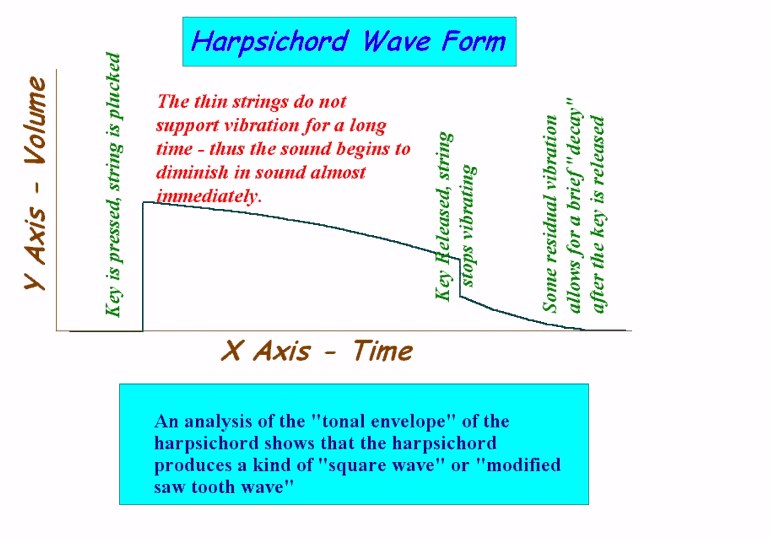 |
About Us | The Mandeville Organ | The Morey Organ | The Never Ending Project | The Essex Chapel Project | Anything Can Be Fixed | Products And Services | Links | Contact Us | Guest Book